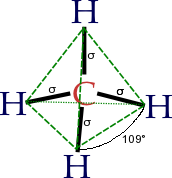
Visible-Light-Promoted Arylation Reactions Photocatalyzed by Bismuth(III) Oxide
Sign Up to like & getrecommendations! Published in 2017 at "European Journal of Organic Chemistry"
DOI: 10.1002/ejoc.201701242
Abstract: Bismuth(III) oxide has been successfully applied as a photocatalyst in the arylation of heteroarenes with diazonium salts. With a low catalyst loading (1 to 5 mol%), this cheap and non-toxic semiconductor could efficiently promote the… read more here.
Keywords: iii oxide; visible light; arylation; light promoted ... See more keywords

Structural architectures and biological properties of main group bismuth(III) iodide complexes with heterocyclic thioamides
Sign Up to like & getrecommendations! Published in 2019 at "Inorganica Chimica Acta"
DOI: 10.1016/j.ica.2019.119094
Abstract: Abstract A series of mononuclear, dinuclear and polynuclear bismuth(III) iodide complexes (1–5) bearing heterocyclic thioamide ligands, 2-mercapto-3,4,5,6-tetrahydro-pyrimidine (tHPMT), 2-mercapto-benzimidazole (MBZIM), 2-mercapto-1-methylimidazole (MMI), 2-mercaptobenzothiazole (MBZT) and 2-mercaptopyridine (PYT), have been synthesized and characterized by melting point,… read more here.
Keywords: spectroscopy; iii iodide; bismuth iii; geometry ... See more keywords

Tropolone as anionic and neutral ligand in lead(II) and bismuth(III) complexes: Synthesis, structure, characterization and computational studies
Sign Up to like & getrecommendations! Published in 2017 at "Journal of Molecular Structure"
DOI: 10.1016/j.molstruc.2016.08.005
Abstract: Abstract Two new metal complexes, [Bi(trop)2(Htrop)(CF3SO3)] (1) and [Pb(trop)2(Htrop)] (2), have been synthesized by reaction of the respective metal triflates with an excess of tropolone (Htrop) in the concentrated methanol or dimethylsulfoxide solution. In addition,… read more here.
Keywords: htrop; structure; ligand; bismuth iii ... See more keywords

Bismuth(III) and diorganotin(IV) complexes of bis(2-acetylpyridine) thiocarbonohydrazone: Synthesis, characterization, and apoptosis mechanism of action in vitro
Sign Up to like & getrecommendations! Published in 2018 at "Polyhedron"
DOI: 10.1016/j.poly.2018.08.049
Abstract: Abstract In this paper, three bismuth(III) and diorganotin(IV) complexes based on bis(2-acetylpyridine) thiocarbonohydrazone (H2L) have been fully designed. The tests of the complexes on inhibiting human hepatocellular carcinoma HepG2 cells growth in vitro revealed that… read more here.
Keywords: acetylpyridine thiocarbonohydrazone; diorganotin complexes; iii diorganotin; bis acetylpyridine ... See more keywords

The investigations of mechanical, thermal and rheological properties of polydimethylsiloxane/bismuth (III) oxide composite for X/Gamma ray shielding
Sign Up to like & getrecommendations! Published in 2020 at "Radiation Physics and Chemistry"
DOI: 10.1016/j.radphyschem.2019.108649
Abstract: Abstract Different types of materials are used for radiation shielding owing to the wide usage of radioactive materials in different applications and practices. However, the flexible nature of the shielding material provides a significant advantage… read more here.
Keywords: gamma ray; iii oxide; material; bismuth ... See more keywords

Bismuth(III) Forms Exceptionally Strong Complexes with Natural Organic Matter
Sign Up to like & getrecommendations! Published in 2022 at "Environmental Science & Technology"
DOI: 10.1021/acs.est.1c06982
Abstract: The use of bismuth in the society has steadily increased during the last decades, both as a substitute for lead in hunting ammunition and various metallurgical applications, as well as in a range of consumer… read more here.
Keywords: organic matter; natural organic; bismuth iii; bismuth ... See more keywords

Bismuth(III)-Catalyzed 1,8-Addition/Cyclization/Rearrangement of Propargylic para-Quinone Methides with 2-Vinylphenol: Synthesis of Indeno[2,1-c]chromenes.
Sign Up to like & getrecommendations! Published in 2023 at "Organic letters"
DOI: 10.1021/acs.orglett.3c00179
Abstract: The unique reactivity of in situ generated propargylic para-quinone methides as a new type of five-carbon synthon has been discovered by a novel bismuth(III)-catalyzed tandem annulation reaction. This 1,8-addition/cyclization/rearrangement cyclization cascade reaction is characterized by… read more here.
Keywords: para quinone; quinone methides; cyclization; bismuth iii ... See more keywords

Bismuth(III) Triflate Catalyzed Three-Component Reactions of Indoles, Ketones, and α-Bromoacetaldehyde Acetals Enable Indole-to-Carbazole Transformation.
Sign Up to like & getrecommendations! Published in 2018 at "Organic letters"
DOI: 10.1021/acs.orglett.8b01707
Abstract: A three-component reaction of indoles, α-bromoacetaldehyde acetals, and ketones was developed by using bismuth(III) triflate as the catalyst to realize a straightforward approach for synthesizing carbazole derivatives. The reaction was established mechanistically through the autotandem… read more here.
Keywords: bromoacetaldehyde acetals; three component; iii triflate; bismuth iii ... See more keywords

Molecular bismuth(III) monocations: structure, bonding, reactivity, and catalysis.
Sign Up to like & getrecommendations! Published in 2021 at "Chemical communications"
DOI: 10.1039/d1cc01284c
Abstract: Cationic bismuth(iii) species [BiR2]+ with weakly coordinating counteranions feature two monoanionic ligands R (such as aryls, amides, alcoholates or halides), a vacant bismuth-centred p-orbital, and an occupied bismuth-centred s-orbital. The vacant orbital is available for… read more here.
Keywords: chemistry; redox; catalysis; reactivity ... See more keywords

Bismuth(III) dication trapped on a chlorobismuthate
Sign Up to like & getrecommendations! Published in 2019 at "Journal of Coordination Chemistry"
DOI: 10.1080/00958972.2019.1603373
Abstract: Abstract Metal cations observed with tetrachloroaluminate anion provide insights into the structure and stability of reactive cations. Addition of tris(3,5-dimethylpyrazolyl)borate anion (TpMe2) to [BiCl2][AlCl4] traps a bismuth(III) dication, [TpMe2Bi]2+, possessing a highly electrophilic bismuth center… read more here.
Keywords: iii dication; trapped chlorobismuthate; dication trapped; bismuth iii ... See more keywords

Electrochemical Studies of the Cycloaddition Activity of Bismuth(III) Acetylides Towards Organic Azides Under Copper(I)-Catalyzed Conditions
Sign Up to like & getrecommendations! Published in 2022 at "Frontiers in Chemistry"
DOI: 10.3389/fchem.2022.830237
Abstract: Time-dependent monitoring of the reactive intermediates provides valuable information about the mechanism of a synthetic transformation. However, the process frequently involves intermediates with short lifetimes that significantly challenge the accessibility of the desired kinetic data.… read more here.
Keywords: iii acetylides; copper catalyzed; bismuth iii; organic azides ... See more keywords